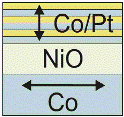Department of Physics and Astronomy: Publications and Other Research

Shireen Adenwalla Papers
Document Type
Article
Date of this Version
2016
Citation
K Foreman et al 2016 J. Phys. D: Appl. Phys. 49 015301
https://doi.org/10.1088/0022-3727/49/1/015301
Abstract
Organic thin films have numerous advantages over inorganics in device processing and price. The large polarization of the organic ferroelectric oligomer vinylidene fluoride (VDF) could prove useful for both device applications and the investigation of fundamental physical phenomena. A VDF oligomer thin film vacuum deposition process, such as thermal evaporation, preserves film and interface cleanliness, but is challenging, with successful deposition occurring only within a narrow parameter space. We report on the optimal deposition parameters for VDF oligomer thin films, refining the parameter space for successful deposition, resulting in a high yield of robust ferroelectric films. In particular, we investigate the influence of deposition parameters on surface roughness, and the role that roughness plays in sample yield. The reliable production of ferroelectric films allowed us to perform detailed measurements of previously unreported properties, including the Curie temperature, the temperature and thickness dependence of the coercive field, the melting temperature, and the index of refraction. The ability to successfully grow robust, switchable, well-characterized films makes VDF oligomer a viable candidate in the field of organic ferroelectrics.
Included in
Condensed Matter Physics Commons, Engineering Physics Commons, Materials Science and Engineering Commons, Nanoscience and Nanotechnology Commons


Comments
© 2016 IOP Publishing Ltd.
CC BY-NC-ND 3.0 licence